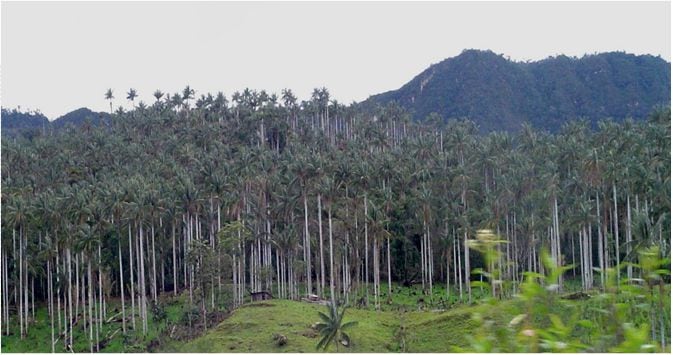
Latin America has lost 60% of the ecosystems it had in 1970, when they began to be documented, “There is so little left that it is essential that we understand that it is imperative to preserve what we still maintain”Gerardo Ceballos and Rodolfo Dirzo, winners of the BBVA Foundation Frontiers of Knowledge in Ecology award, have highlighted to EFE.
Dirzo (Cuernavaca, Mexico, 1951) and Ceballos (Toluca, Mexico, 1958), two international eminences in the field of conservation biology, will be honored tomorrow in Bilbao (northern Spain) for their decisive contribution to the knowledge of the sixth extinction of species, and for providing the necessary scientific basis to declare new protected areas.
Their personal and professional paths crossed for the first time at the University of Wales (United Kingdom) in the 1970s, when both began research in basic ecology, and they continued to strengthen themselves through working together at the institutions to which each of them attended. They are still affiliated today: Stanford University (Dirzo) and the Autonomous University of Mexico (Ceballos).
The obvious harmony (and friendship) that unites them comes from the shared need to apply their knowledge to nature conservation, which has resulted in dozens of joint publications in recent decades.
“We are enormously proud of this award because we are the first Latin Americans to receive it, and because it recognizes that our field of work, the extinction of species, is fundamental to guarantee the stability of life on Earth” Ceballos starts.
What does extinction entail?
Researchers have quantified and compared extinction rates of species and entire families or lineages of flora and fauna, coining a new concept for this process: defaunation.
Beyond numbers, what do we lose by being left without a species? “We are eroding the planet’s capacity to maintain the services or benefits it provides us: drinking water, air quality, or the pollination that makes the crops we feed on grow.s”, explains Dirzo.
“We also lose the possibility of curing diseases, since the 75% of the drug compounds comes from animals and plants; and also something less visible: the cultural and psychological values associated with that species,” keep going.
“Apart from the services that ecosystems provide us, we are just another species in them. “To destroy them is to put our own life and well-being at risk,” stands out.
Both biologists have described well through their studies the so-called ‘waterfall effect’ that occurs in an ecosystem when a species disappears, and how behind it, like a house of cards, countless species end up falling apart. ‘cards’many of them without even having been discovered in the case of biodiversity.
Ceballos cites the example of recent research in Mexico on specimens of the ivory-billed woodpecker preserved in museums (extinct in Mexico), in which a number of small species have been found on the wings that disappeared with these woodpeckers without having been described.
What is yet to be discovered
Approximately 12 million species have been identified on the planet, but both researchers have emphasized in their scientific articles that this figure is only the tip of the iceberg and there would be hundreds of millions of species to be discovered.
“That is why it is so alarming that we are losing a surface of coral reef, a mangrove, a grassland… because we are also losing a large number of species that we will not have even gotten to know,” Ceballos says.
With current mathematical models, ecologists estimate that, taking microorganisms into account, the planet would host more than a trillion different species, a figure indicative of both the pending knowledge and “of the uncertainty associated with the real extinction figures.”
“It is a situation similar to if you go to a bank to make a deposit of two thousand euros, you ask what reserves they have and they don’t know how to tell you,” Ceballos points out.
When asked which ecosystems of the Latin American continent most urgently need to be protected, both answered “all”, because “Maintaining what we have left is the least we can do to give biodiversity and ourselves a chance.”
The region has, as they remember, a representation of all the existing ecosystems on the planet: rainforests, Atlantic forests, mangroves, or semi-arid and arid areas such as the Atacama Desert (Chile), where it remains a mystery that plants grow in areas where there have never been records of rain, among others. “The fundamental thing is that we understand that all this is really in danger,” Dirzo concludes.
Source: Gestion
Ricardo is a renowned author and journalist, known for his exceptional writing on top-news stories. He currently works as a writer at the 247 News Agency, where he is known for his ability to deliver breaking news and insightful analysis on the most pressing issues of the day.












